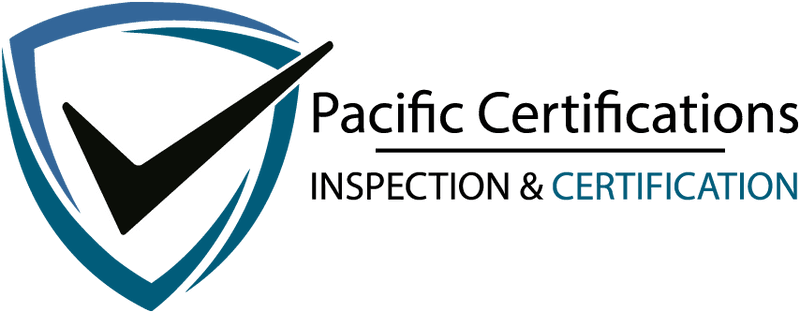
What is BS EN 13445-1:2021 – Unfired Pressure Vessels General?
BS EN 13445-1:2021 deals with the design and construction of unfired pressure vessels. Specifically, it provides general guidelines and requirements for unfired pressure vessels and their components. Unfired pressure vessels are containers used to hold gases or liquids under pressure but are not exposed to direct fire or heat from a process within the vessel.
Here’s an overview of what BS EN 13445-1:2021 covers:
- Scope: This standard defines the general principles and requirements for the design, manufacture, inspection, testing, and documentation of unfired pressure vessels. It applies to vessels and parts of vessels operating at pressure levels greater than or equal to 0.5 bar gauge but less than or equal to 500 bar gauge.
- Materials: It specifies requirements for materials used in the construction of pressure vessels, including material selection, testing, and verification.
- Design: The standard outlines design criteria, including calculation methods, for the safe and reliable design of pressure vessels. It covers aspects such as pressure, temperature, safety factors, and allowable stress levels.
- Manufacturing: BS EN 13445-1:2021 defines requirements for manufacturing processes and procedures to ensure the quality and integrity of pressure vessels during fabrication.
- Inspection and Testing: It provides guidelines for inspection and testing procedures to verify the quality and safety of pressure vessels. This includes non-destructive testing, hydrostatic testing, and other relevant examinations.
- Documentation: The standard specifies the documentation that should accompany unfired pressure vessels, including design reports, manufacturing records, and inspection and testing reports.
- Marking and Certification: It outlines requirements for marking pressure vessels to indicate compliance with the standard and other relevant information.
- Compliance and Conformity: This standard is part of the broader European Pressure Equipment Directive (PED) framework, and compliance with it ensures that pressure vessels meet essential safety requirements and can be placed on the European market.
It’s important to note that this is just the first part of the BS EN 13445 series. There are additional parts in the series that provide more specific guidance for different types of pressure vessels, such as unfired pressure vessels for specific applications or made from specific materials.
Overall, BS EN 13445-1:2021 is an important reference for manufacturers, engineers, and regulatory authorities involved in the design, fabrication, and inspection of unfired pressure vessels within the European Union and countries that adopt European standards. It helps ensure the safety and reliability of these pressure vessels in various industrial applications.
Requirements of BS EN 13445-1:2021
BS EN 13445-1:2021 outlines a set of requirements and guidelines for the design, construction, and testing of unfired pressure vessels. These requirements are essential to ensure the safety and reliability of unfired pressure vessels in various industrial applications. Below are some of the key requirements specified in this standard:
- Scope and Application:
- The standard defines the scope and application of unfired pressure vessels covered by this standard.
- It specifies that this standard applies to vessels operating at pressures greater than or equal to 0.5 bar gauge and less than or equal to 500 bar gauge.
- Materials:
- The standard provides requirements for the selection of materials used in the construction of pressure vessels, including guidelines for material properties, testing, and traceability.
- Design:
- It outlines design criteria and principles, including calculation methods for the design of pressure vessels.
- Design considerations cover factors such as pressure, temperature, safety factors, and allowable stress levels.
- Requirements for flanged connections, nozzles, and openings are also specified.
- Manufacturing:
- The standard sets forth requirements for manufacturing processes and procedures to ensure the quality and integrity of pressure vessels during fabrication.
- Welding and welding procedure qualification are addressed, including inspection and testing of welds.
- Inspection and Testing:
- BS EN 13445-1:2021 defines requirements for inspection and testing procedures to verify the quality and safety of pressure vessels.
- This includes non-destructive testing, hydrostatic testing, and other relevant examinations to detect defects or flaws.
- Documentation:
- The standard specifies the documentation that should accompany unfired pressure vessels.
- This includes design reports, manufacturing records, inspection and testing reports, and other relevant documentation to demonstrate compliance with the standard.
- Marking and Certification:
- Requirements for marking pressure vessels to indicate compliance with the standard and provide other essential information are specified.
- Pressure vessels should be marked with identification numbers, design codes, and safety-related information.
- Compliance with Regulations:
- BS EN 13445-1:2021 is part of the European Pressure Equipment Directive (PED) framework, and compliance with it ensures that pressure vessels meet essential safety requirements for use within the European Union.
- Pressure vessel manufacturers are required to ensure that their products conform to applicable regulations and standards.
- Safety Factors:
- The standard defines safety factors that must be considered in the design of pressure vessels to ensure their safety under various operating conditions.
- Quality Control:
- Quality control measures are outlined to ensure the consistency and reliability of the manufacturing and inspection processes.
- Life Cycle Considerations:
- The standard addresses aspects related to the entire life cycle of a pressure vessel, including design, fabrication, operation, maintenance, and potential decommissioning.
Overall, these requirements help ensure that unfired pressure vessels are designed, manufactured, and tested in a manner that prioritizes safety and reliability, reducing the risk of accidents or failures in industrial processes. Manufacturers, engineers, and regulatory authorities refer to BS EN 13445-1:2021 to ensure compliance with European standards for pressure equipment.
What is EN 13445-2:2021 – Unfired Pressure Vessels – Part 2?
EN 13445-2:2021 is a European standard that is part of the EN 13445 series, which covers the design, construction, and inspection of unfired pressure vessels. Unfired pressure vessels are containers designed to hold gases or liquids under pressure but are not used for the purpose of direct heating or cooling. Part 2 of the EN 13445 series, specifically EN 13445-2:2021, deals with the materials for unfired pressure vessels.
Here are some key points about EN 13445-2:2021:
- Materials Requirements: EN 13445-2 provides detailed requirements and guidelines for the selection of materials used in the construction of unfired pressure vessels. This includes specifications for various materials, such as metals and alloys, that are suitable for use in pressure vessel construction.
- Material Properties: The standard specifies the mechanical and physical properties that materials used in pressure vessel construction must meet to ensure safety and reliability. This includes factors like tensile strength, yield strength, elongation, impact resistance, and more.
- Design Allowable Stresses: EN 13445-2 sets forth allowable stress values for different materials under various conditions, helping designers determine whether a particular material is suitable for the intended application.
- Material Testing: The standard outlines testing procedures and requirements for materials to ensure they meet the specified standards. This may include destructive and non-destructive testing methods.
- Welding Requirements: EN 13445-2 also includes information on welding materials, procedures, and quality control to ensure the integrity of welded joints in pressure vessels.
- Corrosion Resistance: The standard may include information on the corrosion resistance of materials, especially important for vessels that will be exposed to corrosive environments.
- Temperature Limitations: It may specify temperature limitations for various materials, as the performance of materials can vary significantly under different temperature conditions.
- Documentation: EN 13445-2 may require comprehensive documentation related to the materials used, including material certificates, test reports, and traceability records.
Furthermore, EN 13445-2:2021 should be used in conjunction with other parts of the EN 13445 series, particularly EN 13445-1, which deals with the general requirements for unfired pressure vessels. Together, these standards provide a comprehensive framework for the design, construction, and inspection of unfired pressure vessels while ensuring the materials used meet the necessary safety and quality standards.
Benefits of BS EN 13445-1:2021 Unfired Pressure Vessels General
BS EN 13445-1:2021 is a European standard that provides guidelines and requirements for the design, construction, and inspection of unfired pressure vessels. Unfired pressure vessels are containers designed to hold gases or liquids under pressure but are not used for the purpose of direct heating or cooling.
Here are some of the benefits and advantages of adhering to this standard:
- Safety: Compliance with BS EN 13445-1:2021 ensures that pressure vessels are designed and constructed to meet rigorous safety standards, reducing the risk of accidents and catastrophic failures. This is particularly important when dealing with pressurized gases or liquids that can be hazardous.
- Legal Compliance: Many countries in Europe require manufacturers and operators of pressure vessels to adhere to this standard to ensure legal compliance. Non-compliance can result in legal issues, fines, or shutdowns.
- Quality Assurance: The standard provides a framework for ensuring the quality of pressure vessels. It outlines procedures for materials selection, welding, and testing, which can help manufacturers produce high-quality products.
- Design Guidelines: BS EN 13445-1:2021 provides detailed guidelines for designing pressure vessels, including factors such as materials, design calculations, and loadings. This helps engineers and designers create vessels that are structurally sound and perform as intended.
- Uniformity: By adhering to this European standard, manufacturers and users across different countries can achieve a degree of uniformity and compatibility in the design, inspection, and operation of unfired pressure vessels. This can simplify international trade and cooperation.
- Reliability: Following the standard’s requirements for inspection and non-destructive testing helps identify potential defects or weaknesses in pressure vessels, increasing their reliability and longevity.
- Reduced Risk: Adhering to the standard helps reduce the risk of accidents, leaks, and failures, which can have significant financial and environmental consequences.
- Documentation: The standard requires comprehensive documentation throughout the vessel’s life cycle, including design records, fabrication records, and inspection reports. This documentation can be valuable for traceability and maintenance.
- Improved Performance: Pressure vessels designed and constructed in accordance with BS EN 13445-1:2021 are more likely to perform as intended, which can lead to improved operational efficiency and reduced downtime.
- Environmental Benefits: Properly designed and maintained pressure vessels are less likely to leak, minimizing the risk of environmental contamination from hazardous materials.
In summary, BS EN 13445-1:2021 provides a comprehensive framework for the safe design, construction, and operation of unfired pressure vessels. Adhering to this standard offers numerous benefits, including enhanced safety, legal compliance, improved quality, and reduced risk of accidents and environmental harm.
Pacific Certifications is accredited by ABIS, if you need more support with BS EN 13445, please contact us at +91-8595603096 or support@pacificcert.com
Read About: DIN EN 12392







